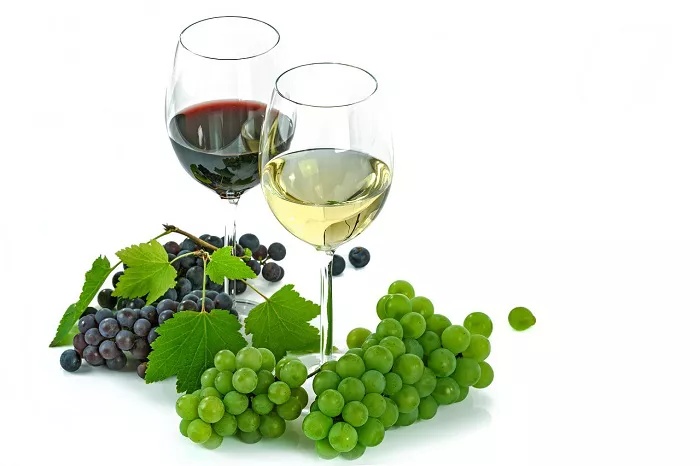The Bordeaux wine market is navigating through turbulent times, as multiple challenges converge to create an uncertain future for the region’s renowned wines. The market, which has long been known for its stability, now faces shifting consumer demands, increasing tariff threats, and internal struggles with outdated distribution systems. The spotlight is especially intense following former President Donald Trump’s April 2 speech, which warned of potential 200 percent tariffs on European wines—a move that could push Bordeaux to the brink of collapse.
Bordeaux’s troubles are well-documented. Although the en primeur campaign for the 2024 vintage is underway, expectations are low, and the wine’s ability to resolve long-standing issues in the market remains uncertain. The rising prices of Bordeaux wines have priced out many young buyers, a demographic Bordeaux had hoped to engage. Yet, an interesting trend has emerged in the UK, where nearly 40 percent of auction buyers are under 40 years old. These buyers are opting for mature wines, often available at a lower price than their younger counterparts—a problem Bordeaux has yet to address effectively.
A Difficult Vintage Ahead
The 2024 vintage is unlikely to revive Bordeaux’s fortunes. While it will not be a disaster, it is not expected to be a standout year either. The wines may be enjoyable, but production levels are lower than usual. For example, Château Badette in Saint-Émilion produced only 10,000 bottles this year, half of its usual output. Some First Growths in the Médoc produced a mere 8 hectoliters per hectare. Despite this, some châteaux have managed to produce nearly normal quantities, signaling that the 2024 vintage may be uneven in both quality and quantity.
Mixed Market Signals
Earlier in the year, Sylvie Cazes, owner of Château Chauvin and president of the Association des Grands Crus Classés de Saint-Émilion, expressed cautious optimism about the market. She noted that the New York market was performing well, with tariffs stabilizing and négociants clearing out their stocks. “Interest rates are falling, the US economy is good, and people are confident,” Cazes said in January. However, the picture in China, Bordeaux’s once-booming market, was less rosy. Despite the country beginning to drink again after years of pandemic restrictions, Bordeaux still faces a steep uphill battle to regain its foothold there.
Despite these challenges, the mood in Bordeaux was one of determination. In April, following Trump’s tariff threats, many in the region remained optimistic, viewing the crisis as an opportunity to refocus marketing efforts. The region, traditionally reluctant to embrace modern marketing techniques, is now recognizing the need to sell Bordeaux wines to a broader audience.
The Changing Role of En Primeur
Historically, the en primeur system was central to Bordeaux’s distribution, allowing châteaux to sell their wines early at a fixed price. However, as prices have risen and consumer interest has waned, the system has begun to show cracks. Matthieu Cuvelier of Château Clos Fourtet noted that while they easily sell all their 60,000 bottles en primeur, their other property, Château Pougeaux, struggles to sell half of its 250,000-bottle production. He speculates that in the future, only around 70 châteaux may continue to sell their wines through en primeur, down from around 300 currently offered.
Axel Heinz of Château Lascombes also criticized the current Bordeaux system, arguing that wines today need to be marketed for consumption rather than just investment purposes. “Bordeaux suffers from having been bought and put in a warehouse; there’s not enough consumption, and therefore not enough visibility,” Heinz explained. Fabrice Bernard of Millésima echoed these sentiments, claiming that Bordeaux has spent too much time chasing high scores and neglecting consumer needs.
Tariff Threats and Global Challenges
The looming threat of a 200 percent tariff on EU wines, which would drastically increase the cost of Bordeaux in the United States, has stirred widespread concern. Bordeaux producers fear such tariffs would lead to widespread closures of both châteaux and négociants, devastating the local economy and international sales. Although the 200 percent tariff has not yet materialized, a 20 percent tariff has been implemented, still a significant blow to Bordeaux’s bottom line.
The impact of such tariffs is particularly concerning for smaller négociants, who rely on narrow margins and have already been grappling with a slower-moving market. Some companies, like Millésima, have already stocked their US warehouses with between 18 months to two years’ worth of wine, offering a temporary buffer. However, if tariffs escalate, it could lead to significant disruptions, with potential closures or shifts in strategy. The uncertainty in the global market is compounded by the continued downturn in China, which was once Bordeaux’s top export market.
Pricing as a Key to Survival
With demand low and the risk of further market instability, the 2024 vintage will likely hinge on aggressive pricing strategies. While Bordeaux is unlikely to replicate the dramatic success of past years, many believe a price reset could help stabilize the market. Some suggest that First Growths should aim for retail prices around €200 per bottle, a level similar to 2008 prices, adjusted for inflation. Such a reset could attract buyers and help Bordeaux regain some momentum, but whether this will happen remains to be seen.
The Bordeaux wine market stands at a crossroads. Whether it can navigate its current challenges, adapt to changing global dynamics, and recover its prestige depends on how well it can embrace new strategies and marketing approaches. The outcome is far from certain, but one thing is clear: the region must evolve or risk being left behind.
You Might Be Interested In:


